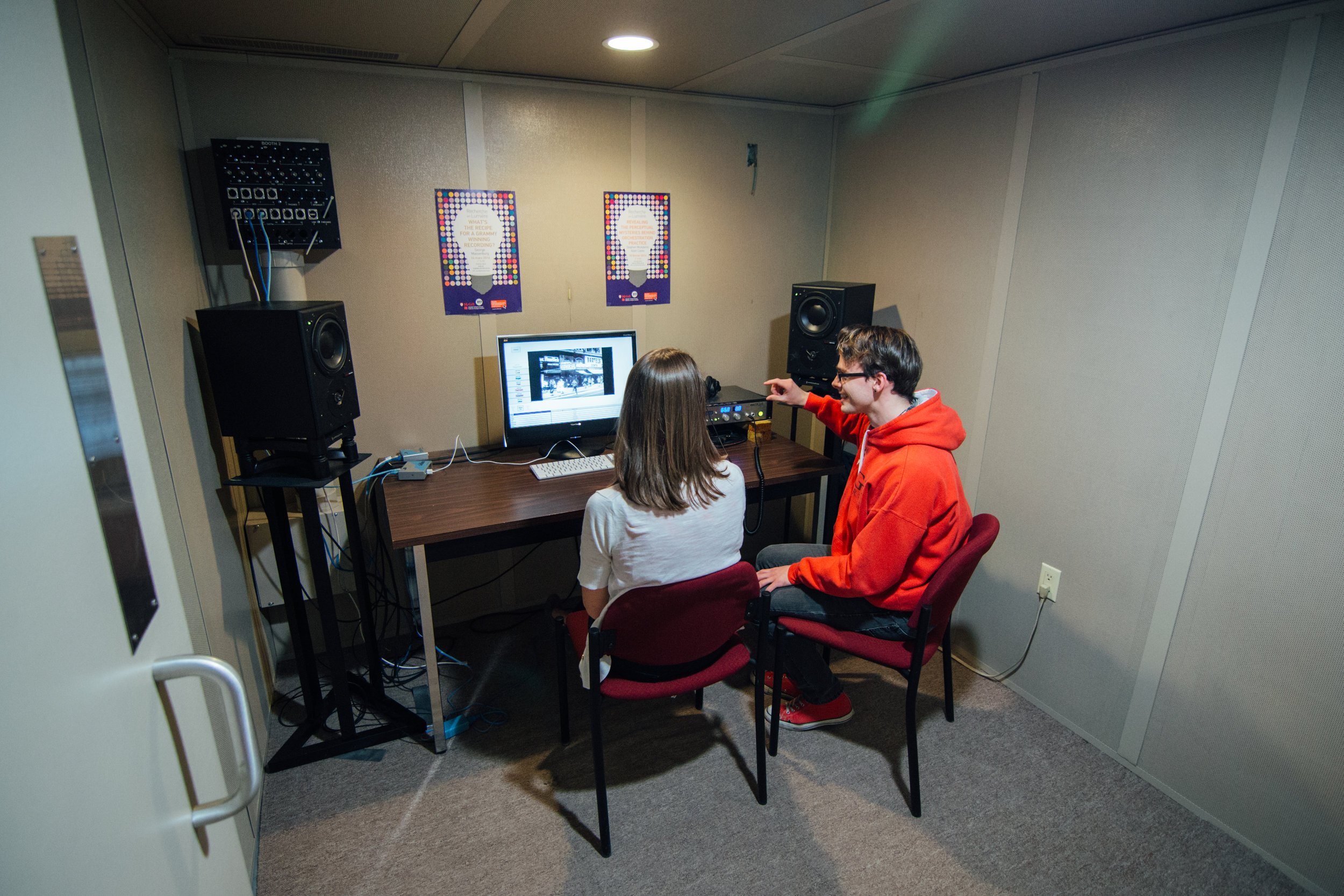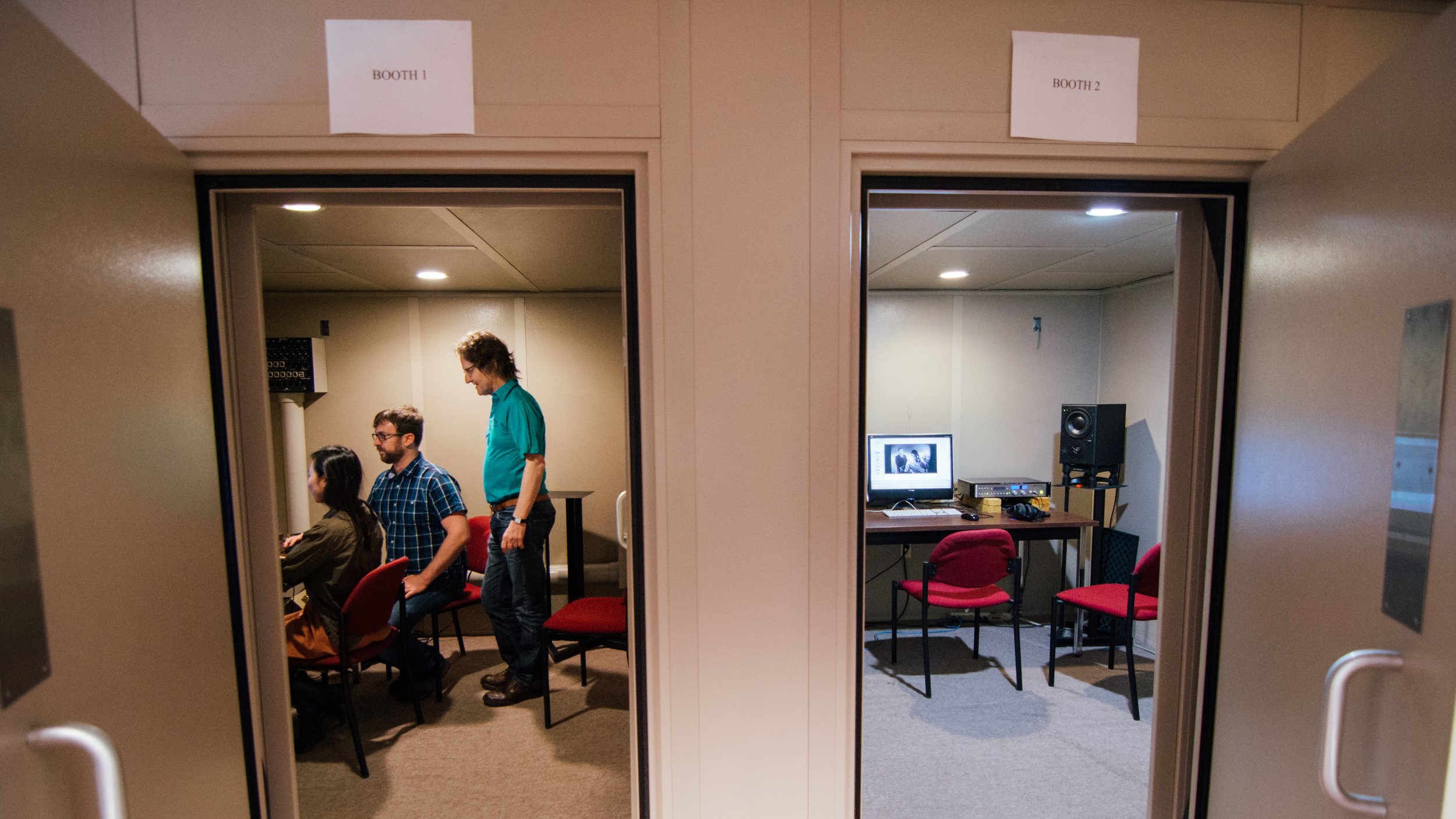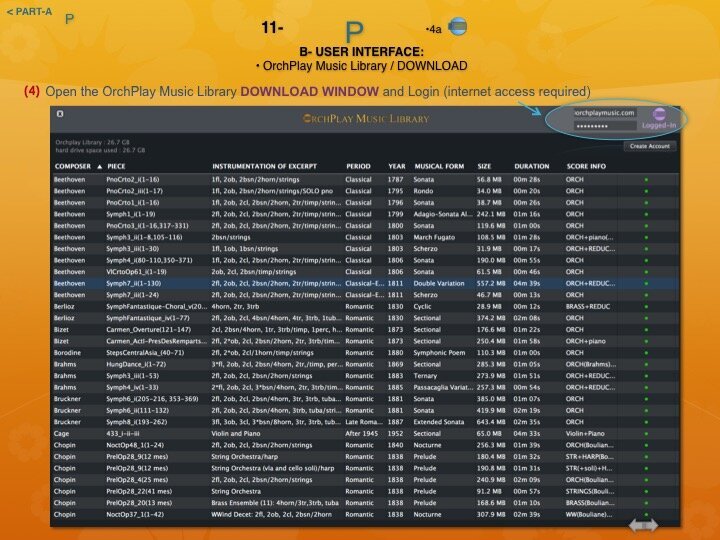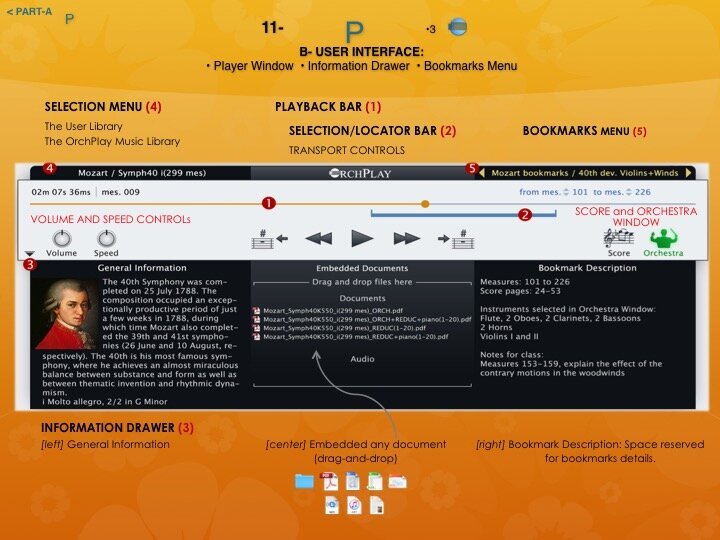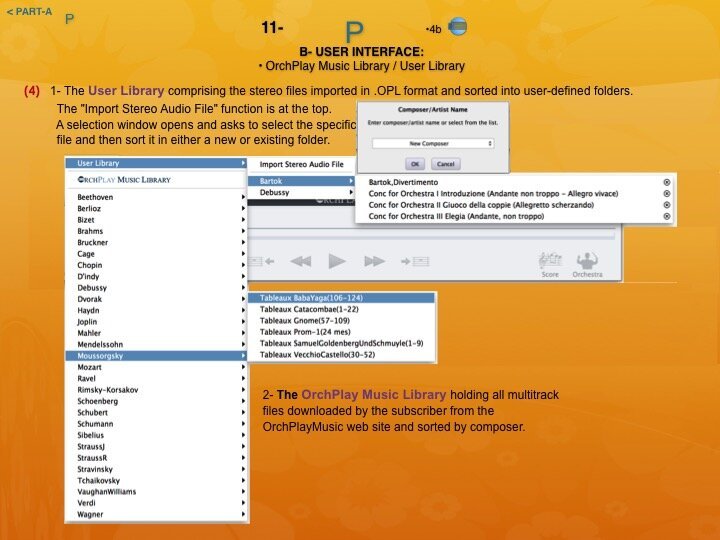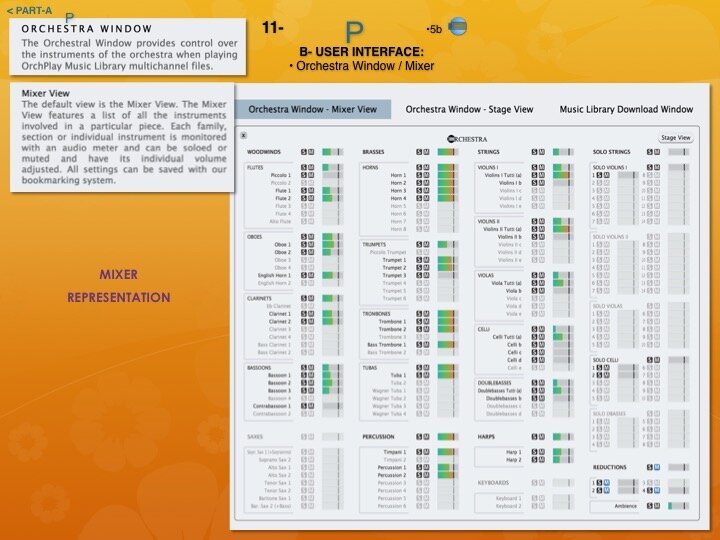
Research Axes
Sub Axes
Sub-Axis 1
Music Analysis
The aim is to extract theory that is implicit in written scores and embodied in recordings of notated and un-notated music. For notated music, scores will be analyzed while listening to different performances, and they will be annotated according to a number of taxonomies related to the musical functions of orchestration sought by composers, the orchestration techniques used to achieve them, and the resulting perceptual effects related to auditory grouping principles and emerging perceptual qualities and associations that arise from the music. The extension to contemporary orchestration and un-notated musics will require additional compositional and analytical expertise and significant evolution of the analysis taxonomies.
Sub-Axis 2
Text Analysis
Analysis of written texts on orchestration or transcribed interviews with composers and conductors will be used to derive theory that is implicit in the ways of communicating what they do when composers orchestrate (procedures, goals, perceptual effects obtained) or when conductors interpret their scores. Several methods will be used including text-mining techniques and corpus studies from the digital humanities, as well as discourse analysis from linguistics. The analyses will also help develop text-based cultural and historical analyses of orchestration practice and provide input to the new field of critical organology (the history of instrument construction in light of the impact and implications of technology), as well as musically oriented work on sound symbolism and its relation to cognitive semantics.
Forsyth (1935) Analysis of timbral descriptors
Sub-Axis 3
Audio Analysis
To model effects of orchestral combinations and their changes over time, acoustic parameters related to timbre perception will be analyzed on individual and combined audio tracks from multitrack or sound-field recordings and from rendered orchestral simulations. Data mining of these time-varying audio parameters will discover new relevant acoustic descriptors and relations among instrument sounds within certain orchestration effects and will model results from perception experiments. Scores often either do not provide sufficient grounds for analysis and theorizing (performed nuances of score-based music performed in acoustic spaces) or do not exist (improvised and electroacoustic music). So new analytic approaches will be developed that use sound as the starting point and that seek to develop symbolic representations of the events and processes that are perceived in the recordings.
Sub-Axis 4
Perception Analysis
Principles derived from perceptual data provide an explanation of how timbre can be used as a carrier of pattern and form in music. Research in psychology on timbre has modeled its multidimensional mental representation in “timbre spaces,” which can predict many phenomena such as the degree to which instruments with different timbres playing at the same time will form separate melodic streams. Auditory scene analysis describes the principles by which sound components are perceptually grouped or separated when sounding simultaneously or playing in sequences. Listeners reports of their perceptions of musical excerpts, when combined with audio analyses, will help understand and formalize the perceptual results produced by certain orchestration techniques. The formalizations of principles will then be integrated into automatic music analysis algorithms and into computer-aided orchestration environments to make them more perceptually relevant.
Perception Analysis
Sounds booths at the McGill Music Perception and Cognition Lab. Photo credit: Tam Lan Truong
Sub-Axis 5
Performance Analysis
The perceptual results of orchestration are highly dependent on how musicians interpret and realize them, the spatial positioning of instruments and loudspeakers, and the acoustics of the space in which they are heard. Performance studies thus need to be at the heart of the study of orchestration practice to characterize how perceptual effects of orchestration are represented in scores, conceived and communicated to performers by conductors, and then achieved by performers and music producers through rehearsal and mixing. Audio analyses across different interpretations are used to characterize what the relations among instruments are when the conductor is or isn't satisfied with the musical result. This method will be used under different conditions of room reverberation and spatial positioning of the instruments to learn more about the role of these physical factors in achieving specific orchestration aims in live performance and recordings.

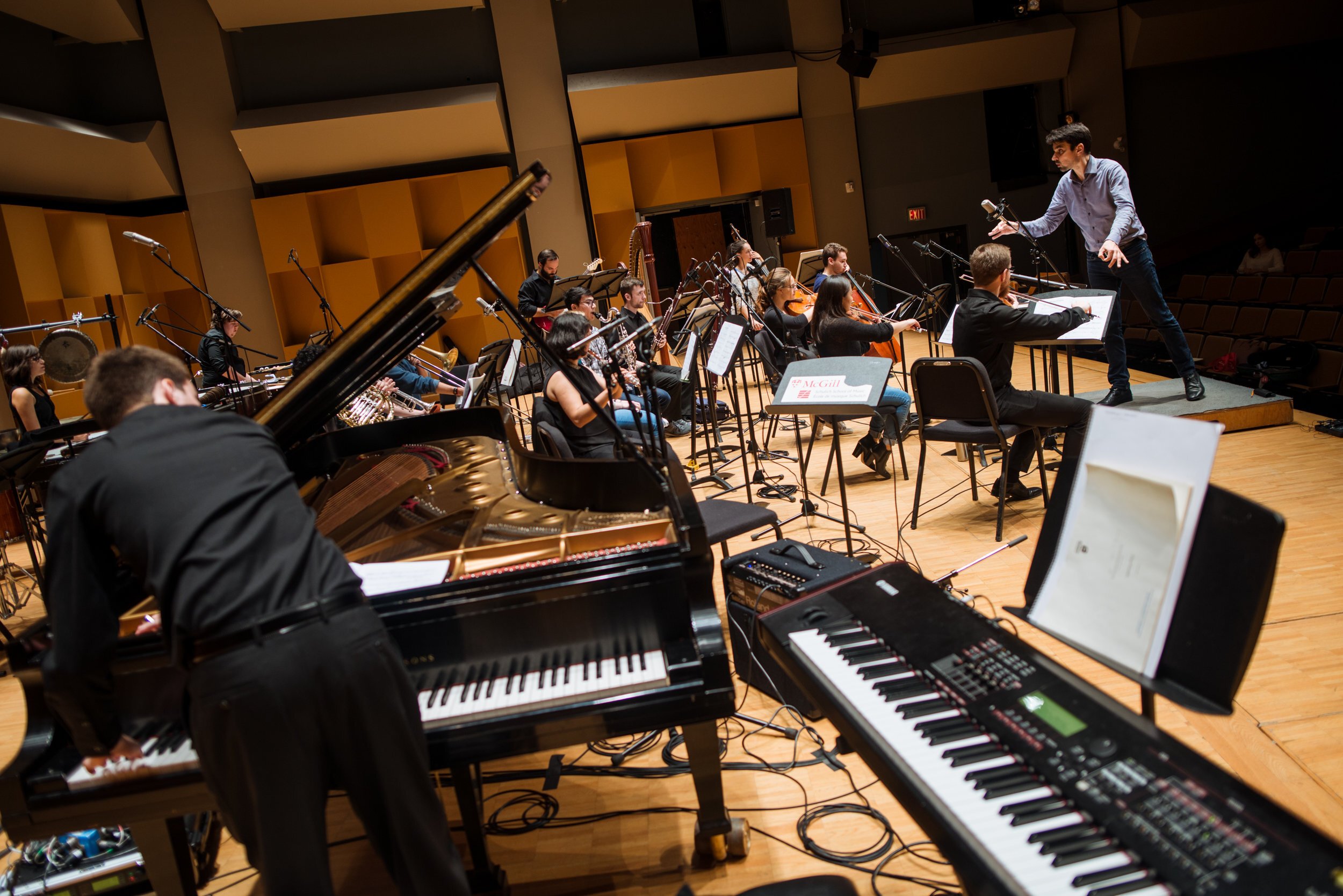
Sub-Axis 6
The Orchestration Analysis and Research Database (ORCH.A.A.D.)
Large-scale data from the Analysis Axis will be entered into Orchard, including machine-readable scores and texts, annotations of scores and texts, modes of playing, recorded or rendered audio clips, acoustic analyses, and perceptual data. ACTOR will develop a touch-tablet-based score annotation tool (OrchView) so that annotations indicating which instruments are playing a specific orchestration effect within an overall orchestral texture can be entered directly into Orchard and used interactively in orchestral simulation player OrchPlay. To facilitate the analysis of unnotated music, we will adapt and extend spectrogram-based music representations and develop symbolic analyses temporally linked to the original sound file. We will also develop score-following software to automatically scroll through the score as the music is played online.
Sub-Axis 7
Generative Tool Development
Orchestration practice requires a vast knowledge of the properties and operation of musical instruments to solve complex problems. We will build upon computer-aided orchestral rendering of musical scores for perceptual studies and educational purposes to expand and develop new tools based on this knowledge. OrchPlay allows users to extract subsets of instruments to be listened to and tested in isolation and in their full orchestral context. Researchers can thus explore the perceptual effects of re-orchestrations and music students and music lovers can gain a full understanding of how the many instruments interact in complex musical textures.
In contemporary classical music, where timbre has become a primary structuring force, computer-aided orchestration tools help composers to fulfill desired musical goals by solving problems with instrumental combinations. Orchidea will help composers discover new timbres and textures. Systematic music analyses based on perceptual principles and experiments will be integrated into Orchidea. These developments will transform creative and pedagogical practice in composition, post-production, live performance, and improvisation.
OrchPlay
Presentation on the format of OrchPlay
Sub-Axis 8
The ACTOR Timbre and Orchestration Resource
Straddling the Tool Development and Output Innovation Axes, a cornerstone output of ACTOR will be the interactive Timbre and Orchestration Resource, which will be progressively embedded in this website. This innovative, open-access, web-based resource will become an invaluable tool for orchestration education, bringing together the knowledge and expertise of orchestration professors in several countries. It will present all ACTOR open-access tools with how-to-use pages, a feedback mechanism, and links for tool acquisition. It will provide a pedagogical, collaborative resource on a vast range of orchestration issues. As an exploration tool for students, composers, and orchestrators, it will also provide metadata on the acoustic, perceptual, and affective qualities of musical instrument sounds and their combinations with audio descriptors, audio clips, visualizations, and projections of the sounds and combinations into descriptor spaces related to the taxonomy of orchestration techniques and effects. It will also serve as the public face of all ACTOR research.
Before the online Timbre and Orchestration Resource…
Photo credit: McGill Schulich School of Music Archives
Sub-Axis 9
Pedagogical Innovation
Teaching innovation will involve development of methods oriented toward contemporary classical music orchestration, film and television scoring, and pop music production with active participation of student communities across the Partnership. It will include development of a principled theoretical framework and standardized vocabulary for teaching orchestration practice in interactive workshops, use of multitrack listening tools to facilitate the learning of perceptual effects of building up orchestration textures, adaptation of computer-aided orchestration tools to the classroom, evaluation of the efficacy of technological tools in pedagogical settings, development of pedagogical workshops and summer schools on orchestration practice and science, creation of composer/performer research ensembles for interactive orchestration problem solving, and development of “edutainment” applications and events with live orchestras for community outreach to various audiences.
Sub-Axis 10
Innovation in Music Studies
Innovating in listener-oriented music studies, ACTOR will develop a framework around how timbre can be used to structure music and provide emotional impact. Music-theoretic work on formal functions in music, processes related to rhythmic and thematic processes, and voice leading has laid the groundwork to expand theorizing to the role of timbre and orchestration in these areas as well as in interactions between timbre and harmony, and on historical approaches to timbre and orchestration. From this basis and from work in the Analysis Axis, ACTOR will develop theories of timbre as a form-bearing element in music, its role in the perception of formal functions in music and in voice-leading practice and perception, as well as interactions between timbre and harmony and the effects of performance on timbre. ACTOR will also explore extensions of timbre and orchestration theory to popular and non-western musics, to studies of the creative process in orchestration practice, and to timbre's relation to cultural theory.
Sub-Axis 11
Compositional Innovation
Through composer-performer research ensembles, student composers will interact directly with performers and interactively explore different orchestration techniques at several of the ACTOR partner institutions, augmented by possible student exchanges to enrich this experience across languages and cultures. Student and faculty composers will also explore, test and use the creative exploration tools described above, such as interfaces with different musical control approaches in computer-aided orchestration environments. Through these activities, they will learn about the role of spatialization in instrumental and electroacoustic orchestration and how to blend and juxtapose an expanded palette of acoustic and electroacoustic sounds.




